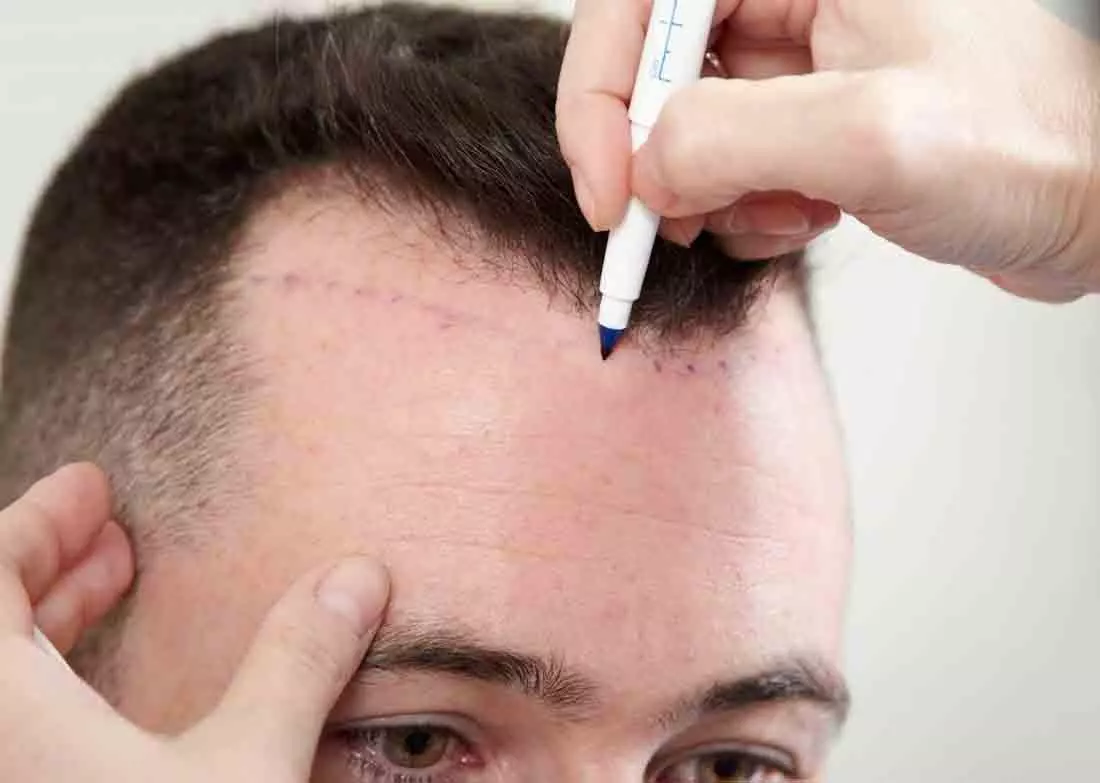
Most people are so attached to the idea of having their hair back, they want it now. You should know that it will take an average of twelve months to achieve optimum results following a hair transplant operation, so the secret sauce is just patience.
The majority of people notice visible improvements six to nine months following their procedure. It’s crucial to understand that the transplanted hair will fall out between two and eight weeks following surgery. This is very normal. The hair may appear thinner by the third month than it did before the transplant.
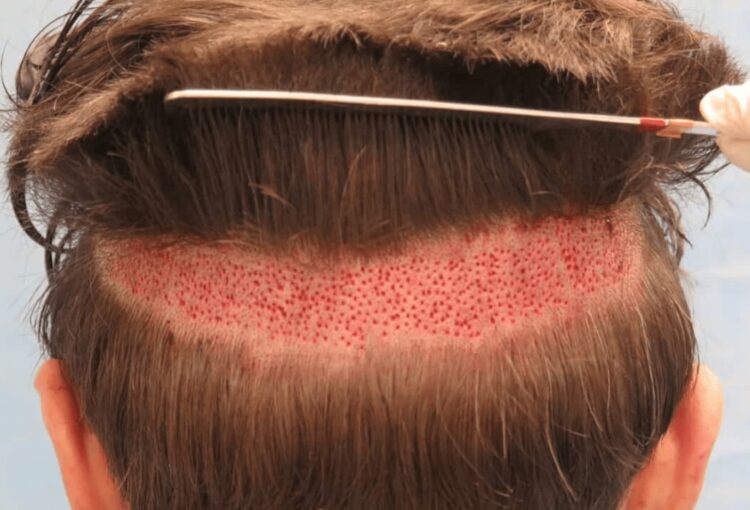
First Week After a Hair Transplant Surgery
It is vital to look after yourself and your scalp especially the first week following your hair transplant. Do as instructed by your surgeon. Washing your head should be avoided for at least the first 24 hours to safeguard the newly transplanted follicles during the critical initial phases of recuperation. Expect to take over-the-counter painkillers for the first few days if you feel discomfort. Any medicine you may need depending on your individual situation and medical history should be prescribed by your doctor.
Also, scab formation is a normal element of the body’s function following a successful hair transplant. It acts as a natural barrier, protecting the skin from open wounds. Since a hair transplant procedure involves several microscopic incisions, scabbing in the recipient region is frequent on the first few days after surgery. You may also feel some redness and swelling in your scalp, but this is likely to be small and will go away in a few days.
Your grafts should be stable by the end of the first week following the hair transplant, and you may generally wash and moisturize your hair to help the scabs heal.
One to Three Months Post Procedure
This is the time for you to maintain your faith in your recovery. Two to three months following the hair transplant surgery, the hair follicles go into a temporary resurrection mode and you will notice little or no development for some time. You may shave your existing hairs to avoid an uneven appearance, and while the recipient region may still be a little pink from the treatment, this will improve over the next months, and the donor area should look normal.
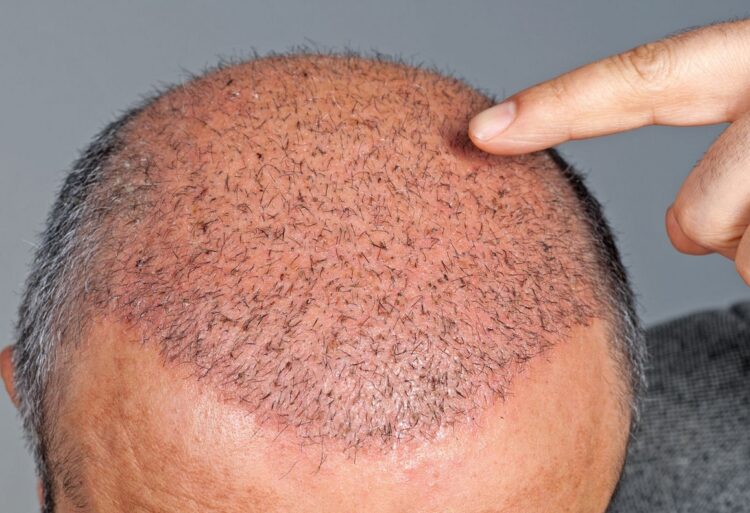
Three to Four Months Through
It is normal to notice early stages of development in the transplanted hairs in about three to four months following the hair transplant procedure, although the hairs are not fully grown at this point. At the four-month point, you should expect an additional 50% gain. The entire process takes at least a year so patience will pay off.
Success Rate Of a Hair Transplant
Your hair grafts must survive and adapt to new regions where they have been transplanted for hair transplants to be effective. According to clinical research, between 85 and 95 percent of all implanted grafts thrive in the transplanted location. Hair transplants are often quite effective, as seen by this very high concentration.
A failed hair transplant is extremely rare, and some of the reasons why a hair transplant may fail should be clearly identified by your surgeon during the consultation.
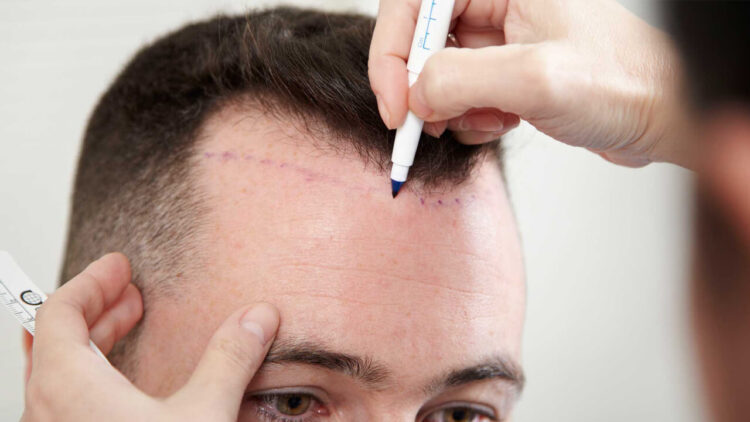
Will my Hair Transplant Last Forever
Because healthy hair follicles are transplanted into thinning or bald regions, most hair transplants last a lifetime. Transplanted hair functions identical to natural hair. As a result, if the hairs in the donor area become gray with aging, your transplanted hair will ultimately gray as well.
It is vital to remember that the texture and volume of transplanted hairs will not have attained their ultimate appearance until at least a year following the transplant procedure. The hair follicles will continue to increase over the next several months post-operation. About 60% of the ultimate outcome will be attained between the sixth and ninth months.
In summary, 3 to 4 months following a hair transplant, around 10 to 20% of the hair grows back. Over the next six months, you should expect to observe around 50% hair growth following a hair transplant. After 8 to 9 months, you should expect to see 80% of the outcomes. After FUE hair transplant, one can expect to get 100% hair transplant outcomes in 9 to 12 months and in some cases longer periods of time. If something is not going well or you have doubts, contact your clinic. Your surgeon know your medical history and the details of your operation; so, they will be able to tell you exatcly if everything is on track or not.
Post-operation Aftercare
Your surgeon or medical consultat is the best person to advise you in regards to aftercare; feel free to follow their instruction. On top of that, you might want to have frequent PRP sessions to strengthen your scalp and increase the circulation of blood, advises experts from HairAndSkinScience located in Sydney. Also, PRP contains growth hormone that will help your baby hairs to “wake up”. PRP sessions should be done frequently, so don’t think that one or two session in a lifetime will provide you healthy hair.
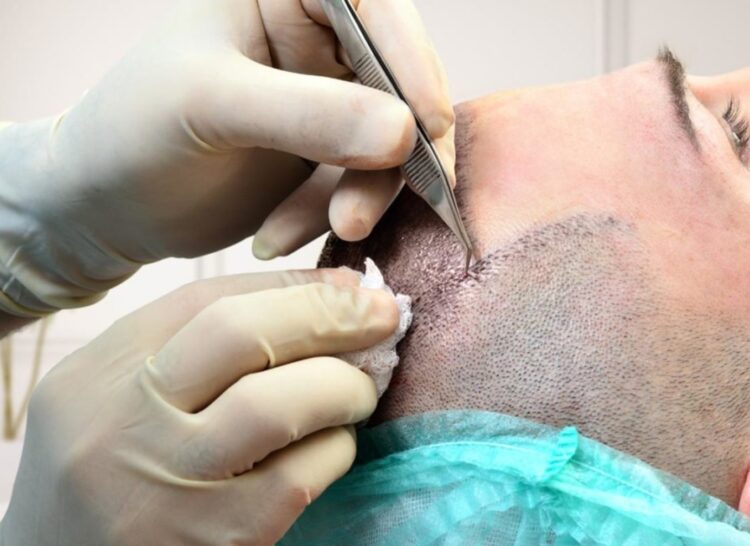
Which Clinic to Choose?
Depends on where you are currebtly living, you must have a hair transplant clinic nearby. However, not every clinic provide the same service. There are high quality clinics in the UK, USA & Australia but the cost of the operation starts from 10,000 dollars which is not affordable. Alternatively, there are countries like Turkey, Mexico, India and Hungary which are significantly cheaper.
Ask for photos!
The key is to find the best fit for your hair type and hair loss. The best indicator of the research is before after photos. If you have a afro-type hair, try to find a clinic which is experienced in that area. If you are a female and you would like to have a denser hair, then ask for examples like your hair type. Clinics in Turkey have been doing a good job for more than a decade, you can see lots of before-after photos and the process at Heva Clinic’s website.











